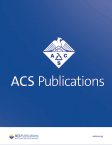用于移动机器人导航的双向自适应增强型 A* 算法
IF 3.4
Q2 PUBLIC, ENVIRONMENTAL & OCCUPATIONAL HEALTH
引用次数: 0
摘要
目的 本文旨在解决移动机器人技术中与路径规划和避障相关的难题。它介绍了一种名为双向自适应增强 A* 算法(BAEA*)的开创性解决方案,该算法采用了一种新的双向搜索策略。这种方法有利于同时从起始节点和目标节点进行探索,提高了算法在导航环境中的效率和有效性。通过使用启发式知识 A*,该算法避免了无益的盲目探索,有助于获得更有效的数据来确定最优解。仿真结果表明,与现有方法相比,BAEA*算法在实现快速收敛以获得最佳行动策略方面表现出色。 设计/方法/途径 本文在参考文献[18]的基础上,采用精心设计的方法,重点开发和评估了用于移动机器人路径规划的 BAEA*。该算法对动态变化的环境具有显著的适应性,可确保在环境变化的情况下进行稳健导航。该算法的规模进一步增强了它在大型复杂环境中的适用性,这意味着它具有各种实际应用的灵活性。我们提出的 BAEA* 算法与双向自适应 A* 算法(BAA*)[18] 在五个不同的环境中进行了严格的评估,证明了 BAEA* 算法的优越性。BAEA*算法的性能始终优于BAA*算法,证明其有能力规划出更短、更稳定的路径,并在所有环境中实现更高的成功率。 研究结果 本文在参考文献[18]的基础上,采用精心设计,重点开发和评估了用于移动机器人路径规划的BAEA*算法。该算法对动态变化的环境具有显著的适应性,可确保在环境变化的情况下进行稳健导航。该算法的规模进一步增强了它在大型复杂环境中的适用性,这意味着它具有各种实际应用的灵活性。在五个不同的环境中,对我们提出的 BAEA* 算法和双向自适应 A* (BAA*)算法 [18] 进行了严格的评估,证明了 BAEA* 算法的优越性。BAEA* 算法的性能始终优于 BAA*,证明其有能力规划出更短、更稳定的路径,并在所有环境中实现更高的成功率。 原创性/价值本文的原创性在于引入了双向自适应增强 A* 算法 (BAEA*),作为移动机器人路径规划的新型解决方案。该算法的独特之处在于它有别于该领域的其他算法。首先,BAEA* 采用独特的双向搜索策略,允许从初始节点和目标节点探索相同的路径。这种方法通过快速收敛到最佳路径并使用 A* 启发式知识,大大提高了效率。特别是,该算法在确保更高的成功率的同时,还能快速识别更短、更稳定的路径,这对于时间敏感型应用来说是一项重要功能。此外,BAEA* 在动态变化的环境中表现出适应性和鲁棒性,不仅能避开障碍物,还能遵守各种约束条件,确保安全的路径选择。BAEA* 的规模进一步提高了其通用性,可无缝应用于广泛而复杂的环境,成为适用于各种实际应用的通用解决方案。与 BAA* 等成熟算法进行的严格评估一致表明,BAEA* 在规划较短路径方面表现出色,在不同环境中取得了更高的成功率,并巩固了其在复杂和具有挑战性的环境中的重要性。这种独创性标志着 BAEA* 具有开创性的贡献,提高了移动机器人路径规划方法的效率、适应性和适用性。本文章由计算机程序翻译,如有差异,请以英文原文为准。
Bi-directional adaptive enhanced A* algorithm for mobile robot navigation
PurposeThe present paper aims to address challenges associated with path planning and obstacle avoidance in mobile robotics. It introduces a pioneering solution called the Bi-directional Adaptive Enhanced A* (BAEA*) algorithm, which uses a new bidirectional search strategy. This approach facilitates simultaneous exploration from both the starting and target nodes and improves the efficiency and effectiveness of the algorithm in navigation environments. By using the heuristic knowledge A*, the algorithm avoids unproductive blind exploration, helps to obtain more efficient data for identifying optimal solutions. The simulation results demonstrate the superior performance of the BAEA* algorithm in achieving rapid convergence towards an optimal action strategy compared to existing methods.Design/methodology/approachThe paper adopts a careful design focusing on the development and evaluation of the BAEA* for mobile robot path planning, based on the reference [18]. The algorithm has remarkable adaptability to dynamically changing environments and ensures robust navigation in the context of environmental changes. Its scale further enhances its applicability in large and complex environments, which means it has flexibility for various practical applications. The rigorous evaluation of our proposed BAEA* algorithm with the Bidirectional adaptive A* (BAA*) algorithm [18] in five different environments demonstrates the superiority of the BAEA* algorithm. The BAEA* algorithm consistently outperforms BAA*, demonstrating its ability to plan shorter and more stable paths and achieve higher success rates in all environments.FindingsThe paper adopts a careful design focusing on the development and evaluation of the BAEA* for mobile robot path planning, based on the reference [18]. The algorithm has remarkable adaptability to dynamically changing environments and ensures robust navigation in the context of environmental changes. Its scale further enhances its applicability in large and complex environments, which means it has flexibility for various practical applications. The rigorous evaluation of our proposed BAEA* algorithm with the Bi-directional adaptive A* (BAA*) algorithm [18] in five different environments demonstrates the superiority of the BAEA* algorithm.Research limitations/implicationsThe rigorous evaluation of our proposed BAEA* algorithm with the BAA* algorithm [18] in five different environments demonstrates the superiority of the BAEA* algorithm. The BAEA* algorithm consistently outperforms BAA*, demonstrating its ability to plan shorter and more stable paths and achieve higher success rates in all environments.Originality/valueThe originality of this paper lies in the introduction of the bidirectional adaptive enhancing A* algorithm (BAEA*) as a novel solution for path planning for mobile robots. This algorithm is characterized by its unique characteristics that distinguish it from others in this field. First, BAEA* uses a unique bidirectional search strategy, allowing to explore the same path from both the initial node and the target node. This approach significantly improves efficiency by quickly converging to the best paths and using A* heuristic knowledge. In particular, the algorithm shows remarkable capabilities to quickly recognize shorter and more stable paths while ensuring higher success rates, which is an important feature for time-sensitive applications. In addition, BAEA* shows adaptability and robustness in dynamically changing environments, not only avoiding obstacles but also respecting various constraints, ensuring safe path selection. Its scale further increases its versatility by seamlessly applying it to extensive and complex environments, making it a versatile solution for a wide range of practical applications. The rigorous assessment against established algorithms such as BAA* consistently shows the superior performance of BAEA* in planning shorter paths, achieving higher success rates in different environments and cementing its importance in complex and challenging environments. This originality marks BAEA* as a pioneering contribution, increasing the efficiency, adaptability and applicability of mobile robot path planning methods.
求助全文
通过发布文献求助,成功后即可免费获取论文全文。
去求助
来源期刊

ACS Chemical Health & Safety
PUBLIC, ENVIRONMENTAL & OCCUPATIONAL HEALTH-
CiteScore
3.10
自引率
20.00%
发文量
63
期刊介绍:
The Journal of Chemical Health and Safety focuses on news, information, and ideas relating to issues and advances in chemical health and safety. The Journal of Chemical Health and Safety covers up-to-the minute, in-depth views of safety issues ranging from OSHA and EPA regulations to the safe handling of hazardous waste, from the latest innovations in effective chemical hygiene practices to the courts'' most recent rulings on safety-related lawsuits. The Journal of Chemical Health and Safety presents real-world information that health, safety and environmental professionals and others responsible for the safety of their workplaces can put to use right away, identifying potential and developing safety concerns before they do real harm.
 求助内容:
求助内容: 应助结果提醒方式:
应助结果提醒方式:


